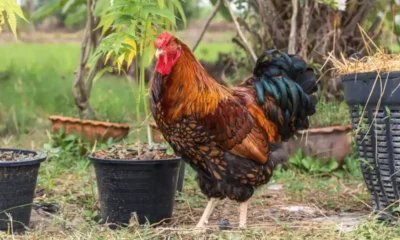Connect with us
Published
2 years agoon

It’s officially Pride Month, and as we’ve seen in years past, every June ushers in myriad companies, industries and brands touting support for the LGBTQ+ community even though they might not always show that same support year-round. Vangst, a leading hiring platform within the cannabis industry, has been at the forefront of reporting employment trends in the industry, including patterns centering diversity and inclusion of a multitude of groups.
On June 1, the platform released a report, “LGBTQIA+ Representation in the Cannabis Industry,” detailing just how far the cannabis industry has come in regard to queer and trans inclusion, along with how the industry can still make its workplace and benefits more inclusive to community members.
In the report’s introduction, Vangst Founder and CEO Karson Humiston writes that the cannabis industry today is “as small as it’s ever going to be,” citing that 100,000 new cannabis jobs are being created this year alone. With that in mind, she says that people from “all walks of life” are entering the cannabis industry for the first time and it’s “more important than ever” for the industry to promote and work toward a “truly diverse, equitable and inclusion culture.”
Looking at overall diversity in the industry, the report notes that the cannabis space wrestles “more publicly than most” with its lack of diversity, especially on the ownership level. In the Vangst 2021 Salary Guide, respondents were asked how they would characterize the makeup of their company’s employees overall: 30.7% said it was strongly diverse, 39.3% said it was somewhat diverse, 17.7% said it was somewhat lacking diversity and 12.2% said it was strongly lacking diversity.
Nearly 14% of respondents self-identified as a member of the LGBTQIA+ community for the 2021 Salary Guide, which is double the national percentage of Americans who self-identified as LGBTQ+ in a February 2022 Gallup poll. The Vangst report notes that the number is likely larger, and will continue to grow, due to the amount of Millennials and Gen Z members joining the cannabis workforce, groups that also self-identified as LGBTQ+ at higher rates in the Gallup poll.
According to Vangst’s survey data, LGBTQ+ employees have a larger presence in the cannabis space when compared to the overall corporate workforce.
While Vangst notes in the report that many companies in the cannabis space can fairly be classified as startups, 100% of the companies it surveyed now offer some form of benefits to their full-time workforce for the first time since it began surveying. That said, the report notes that there is still a lot of work to be done, as healthcare benefits are critical for members of the LGBTQ+ community due to decades of discrimination and disparities.
The report offers a number of suggestions for cannabis businesses to ensure their workplaces and benefits packages are more inclusive for LGBTQ+ employees:
The report starts with suggestions around health insurance partnerships. It suggests businesses partner with healthcare companies that provide benefits for domestic partners, benefits allowing employees to take family and medical leave to care for domestic partners and children of a domestic partner, bereavement leave including the death of a domestic partner or partner’s immediate family and at least one health plan to all employees that affirms and explicitly covers medically necessary healthcare services for transgender people, including gender-affirming treatments.
As the second suggestion for cannabis businesses, the report recommends companies build resources within their organization that work to create an LGBTQ+-inclusive workplace. This includes published written gender transition guidelines, outlining supprtovie politics and practices surrounding workplace gender transition; ensuring the company’s diversity council or working group explicitly includes LGBTQ+ diversity in its mission; and establishing inclusive hiring practices within all organizational levels.
“It’s time we take a serious look at our workplaces with everybody in mind,” Humiston concludes in the report. “I hope that these insights derived from our 2021 Salary Guide survey can act as a resource for every cannabis company.”


Study Reveals State Cannabis Legalization Lowers Immigrant Deportation


DEA Challenges Bid To Use Psilocybin Under ‘Right To Try’ Legislation


Vegans Rejoice as Farmers Switch from Chickens to Hemp


Louisiana Legislative Committee Unanimously Passes Adult-Use Cannabis Framework Bill


Louisiana House Bill to Regulate Hemp Products Advances Along With Senate Bill to Ban


Cresco Labs Workers Reportedly De-Unionize
